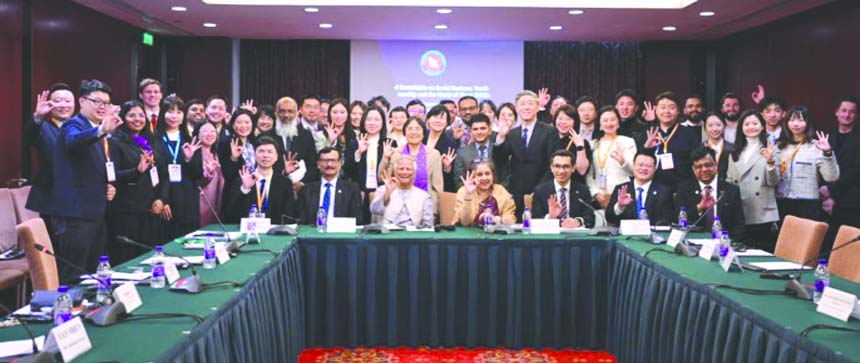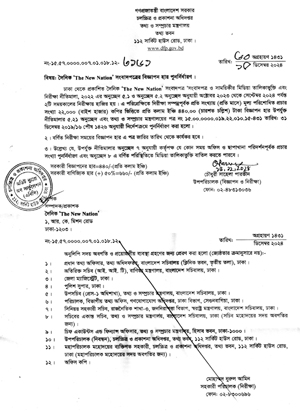Staff Reporter :
Chief Adviser to the Interim Government, Prof. Muhammad Yunus, encouraged Chinese investors to consider Bangladesh as a prime destination for business.
Addressing as the chief guest the “Investment Dialogue with Chinese Business Leaders” hosted by the Embassy of Bangladesh in China, he highlighted the country’s young, adaptable, and fast-learning workforce as a key asset for industries ranging from high-tech to electronics assembly.
Despite facing numerous challenges in the past, Yunus expressed confidence that Bangladesh is emerging stronger than ever.
He noted that the country is undergoing a significant transformation, led by its youth, and that this change is driven by industries and businesses investing in the nation.
“We invite you to be a part of this transformation,” Yunus stated, emphasising that investing in Bangladesh is not just about business but about contributing to the rise of a new generation and a new Bangladesh.
Yunus further emphasised Bangladesh’s strategic location at the crossroads of the Indian subcontinent, pointing out its access to key rivers like the Ganges and Brahmaputra, and proximity to the Bay of Bengal.
“This geographical advantage positions Bangladesh as a crucial economic hub, offering a gateway to global trade for neighboring landlocked countries like Nepal, Bhutan, and India’s northeastern states,” he said.
“Setting up businesses in Bangladesh means serving not just Bangladesh, but an entire region,” Yunus explained, adding that the country can become a production hub for the entire region, serving markets beyond its borders.
For investors looking to tap into a dynamic market with a fast-learning labor force, Bangladesh presents an attractive opportunity.
Yunus shared how Bangladesh’s transformation began with the garment industry, where, in the early days, people did not even know what a factory was.
“Who were the people running these factories, producing all these clothes? Women. Women, who had never left their homes before-who had never worked outside-suddenly became the backbone of an entire industry,” Yunus explained.
“They left their homes, came to the city, and started working in factories. Today, 80% of our garment workers are women. It was a miracle-one of many,” he added.
Yunus further emphasized Bangladesh’s strategic location at the crossroads of the Indian subcontinent, pointing out its access to key rivers like the Ganges and Brahmaputra, and proximity to the Bay of Bengal.
This geographical advantage positions Bangladesh as a crucial economic hub, offering a gateway to global trade for neighboring landlocked countries like Nepal, Bhutan, and India’s northeastern states, known as the “Seven Sisters.”
“If they want to trade with the world, they have to pass through Bangladesh,” he noted
Yunus concluded by reiterating that Bangladesh’s large, young workforce-both boys and girls-is ready to embrace new ideas, learn quickly, and adapt to the demands of modern industries.
“These young people are ready to take on the world. Bangladesh is a country that can lead the way, driven by its youth,” he said.
He also said that Bangladesh, with a population of 171 million today, is a country where the numbers continue to grow. Half of this population is under the age of 47, making it a nation brimming with youth, energy, creativity, and ambition. The young people of Bangladesh are eager to break boundaries and achieve what was once thought impossible-this is what makes the country so exciting.
He said, “When we gained independence in 1971, after separating from Pakistan, we had little to no industrial infrastructure. Our economy was primarily based on agriculture. However, from humble beginnings, something remarkable began to emerge.”
He also recalled, “The production of shirts and clothing started on a small scale. Entrepreneurs from Hong Kong and other places sought to set up factories in Bangladesh as they faced restrictions on their export permits. At the same time, Bangladesh still enjoyed unrestricted access to global markets, making it an attractive option for business. This was the turning point.”



